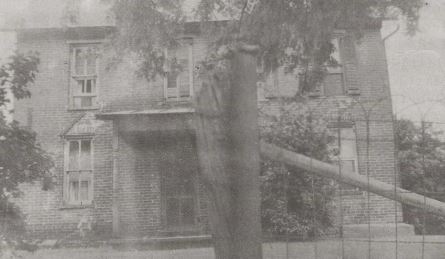
Today’s blog wasn’t my intended topic but as the week evolved, I felt the need to write about recent laws in my state (and maybe yours!) that matter to family historians and genealogists.
Long-time readers know my first career was as an educator; I retired as a Public School Counselor last August. My paternal grandmother taught briefly in Ohio before her marriage. My husband is also a retired educator. His great grandfather was a lifelong teacher and principal in rural Indiana. Although not educators, my Leininger line certainly valued education as they built their house across the Indiana-Ohio state line for the purpose of being able to have a choice option of where to send their children to school. Even back in the day school funding was problematic so when one district had cuts, they simply moved their belongings to the other side of the house and enrolled in the other school district. A novel way to ensure their children were well educated.
I am in favor of the community having a voice in schools and that schools are critical for a region’s future success.
This week, the Florida legislature passed two bills that affect schools. The first allows parents to sue teachers if school personnel “instructs” a student in third grade or under on sexual orientation. On the surface, you might think that discussion isn’t age-appropriate. Children notice EVERYTHING and they ask for information when they don’t understand something. What is a teacher supposed to say when a kid asks why does Jack has two mommies or two daddies? I always replied, “Because each family is different which is what makes them so special.” I can see that today, a parent with an agenda might take that statement to the court.
Here’s why I gave that reply to my elementary students . . . When I was their age I was the only child with divorced parents in my parochial school. Not until I was in 6th grade did another child with divorced parents enroll. Pre-Vatican II divorce was a serious offense by Roman Catholic Church standards. We learned that in religion class. I was penalized because my father never came to school functions – the PTA awarded points for parents who attended monthly meetings. Moms got 1 point and dad’s got 5 points. A dad only had to show up once a year and the mom every other meeting to exceed my mother’s perfect attendance number. In May, any student who had parent participation above a certain number would get an ice cream treat. I never got one.
Those were painful times. I thought the world had changed towards acceptance of differences but in my state, we’re slipping backward. Instead, the governor embarrased responsible high school students because their belief system is different than his. But that’s not all that’s happening in Florida.
Teacher training on diversity is being canceled and teacher lessons that imply someone is responsible for actions “committed in the past by other members of the same race, color, sex, or national origin.” that makes a student feel uncomfortable is forbidden. Again, parents can sue the teacher for the lesson. Here’s my problem with this. I’ve blogged about the KKK targeting my maternal grandparents. I’m white and obviously, the KKK hoodlums were white. A parent not liking my lesson or blog can sue me for telling the truth about the past! The law doesn’t protect the victims but the perpetrators. My mother’s trauma as a child enduring the long night she thought she would die is irrelevant in Florida because we don’t want to hurt the feelings of a white child today whose ancestor may have been responsible.
My family is far from perfect and I’ve written about my own ancestor, Daniel Hollingshead, who upped his social standing at the expense of others. I’m not proud to have an ancestor who was complicit and tolerant of his second wife who had inherited enslaved people.
We must remember the past, the good, the bad, and the ugly, or we haven’t learned the lessons. Suing is not the way to deal with uncomfortable topics. My former school district has had nearly 9% of its teachers resign in the past year. How many more will be driven out because they can no longer speak the truth?
Weekly I volunteer at my local train depot museum. The building has two doors; built-in 1909 the law was Separate but Equal. The title of the law was half correct – the facility was separated by race but it was anything but equal. People of color had to share one small restroom while white people had larger, separate facilities. Whites had heat on their side of the wall and a larger ticket window. Their space was also much larger. Equal? Nope! Unbelievably, the building remained separated until Amtrack shut it down in the late 1970s. The law may have been off the books but its effect lingered much longer.
That’s not the only place the law lingered. As a teen, I worked for the City of St. Petersburg. In City Hall was a racist mural and the water coolers had painted above “whites” and “colored.” I had learned about Jim Crow laws in U.S. History class in the north but it never occurred to me that a visible reminder remained in my lifetime. When I questioned it of my director, her response was “You’re a carpetbagger; you wouldn’t understand.” She was entirely correct. I’ve lived in my county for 50 years and I still don’t understand people refusing to accept differences and acknowledge the mistakes of the past.
If the schools aren’t going to be able to do the job then we, as the remembers, must step up and speak out. I’d be interested to know how you take on the challenge.

